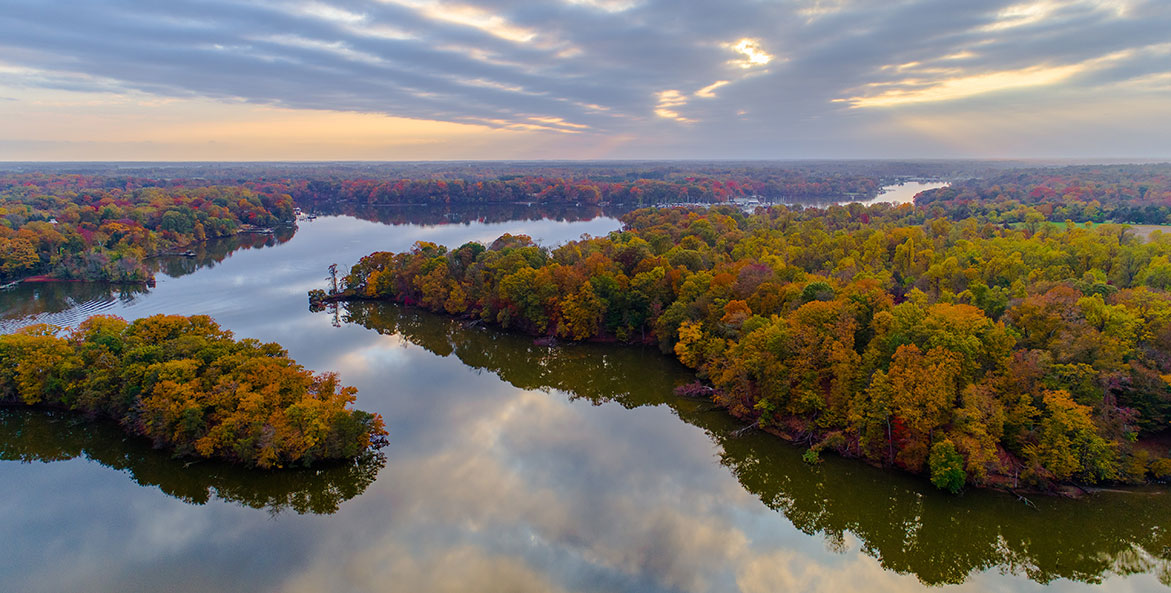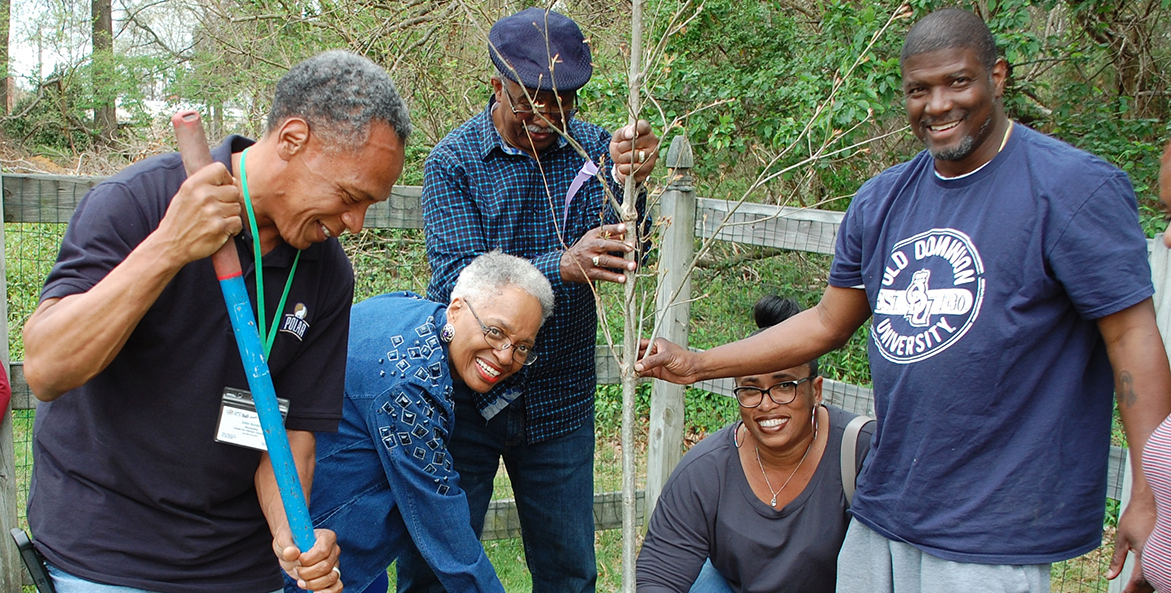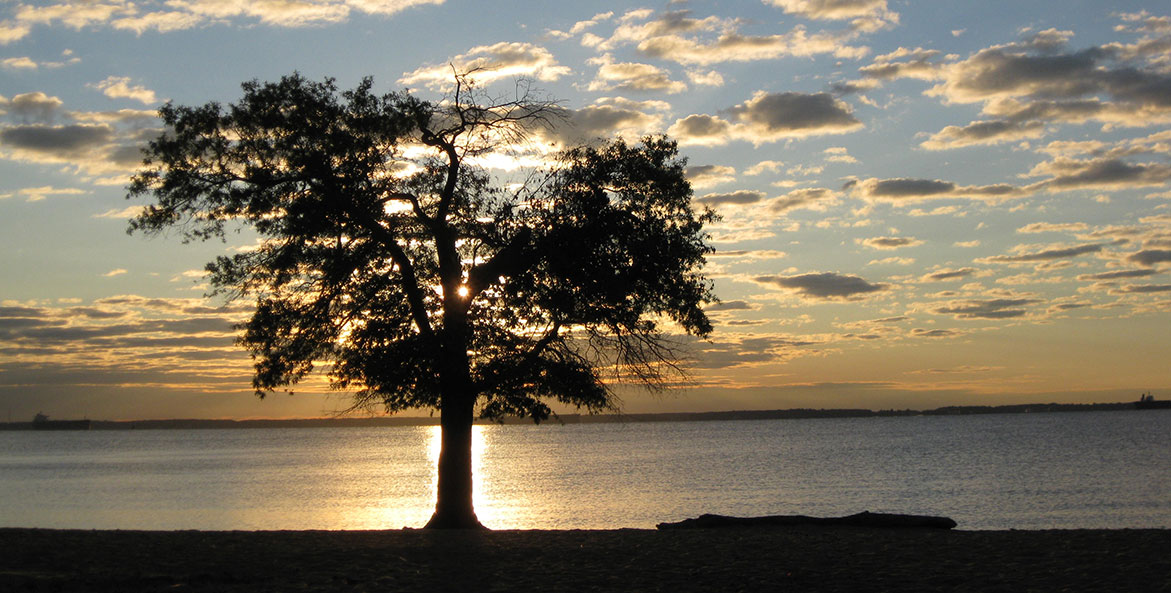When discussing trees, we could quote the Lorax endlessly, but here at CBF we stick with a very simple motto: “More trees, please!” From capturing and filtering out pollution before it enters our waterways to alleviating flooding by stabilizing the soil, trees provide countless health, economic, and environmental benefits—and they are critical to saving the Bay.
While many people can make general statements on their importance, there are multitudes of fascinating facts about trees that you may not know. We compiled a few of our favorites here.
1. Trees clean more than our air; they clean our water, too.
Riparian buffers—trees and shrubs planted along streams—provide outstanding benefits, reducing nitrogen, phosphorus, and sediment pollution in both rural and urban landscapes. Research suggests that riparian buffers remove from 19 to 65 percent of the nitrogen pollution; 30 to 45 percent of the phosphorus pollution; and 40 to 60 percent of the sediment that would otherwise enter adjacent streams. Beyond their filtering prowess, tree canopies shade and cool water, helping to prevent wide fluctuations in temperatures that can stress fish and other aquatic life, and they also help stabilize stream banks and reduce erosion. Furthermore, streamside forests sequester carbon and can provide habitat for wildlife, including pollinators, and act as wildlife corridors, providing cover and food sources.

Samuel Shoge
2. Trees are good for our health and well-being.
Have you ever walked into a forest and immediately felt an overwhelming sense of peace and quiet? Studies have suggested we have mental and physiological reactions to greenspaces, even in as little as 10 to 20 minutes. The levels of our stress hormones drop, heart rate and blood pressure declines, and we are more likely to report feelings of good health.
In addition, there is also evidence that greenspace can contribute to a broader measure of community well-being, called social cohesion, a measure of connection and trust. For example, a study of residents in public housing buildings found that those who had access to common spaces with more trees and grass were more likely to use those spaces and form social ties with their neighbors, which was in turn related to their sense of safety.
3. Trees are communal beings…
Trees are often central figures in the natural community, providing habitat for wildlife and utilizing bacteria and fungi to find nutrients in the soil. But trees also create their own communities. In fact, a group of aspen trees is considered a singular organism. The root system is vast and each tree—which is a genetic replacement of the other trees in the same group—is rooted into each other more so than the soil.
Additionally, trees communicate with one another. Many of us have walked through a forest, listening to the rustling of the leaves—maybe keeping an eye out for a Tolkien ent or two—and wondered what trees might say to one another. Utilizing chemical, hormonal, and slow-pulsing electrical signals, trees can communicate alarm and distress to one another. Studies of the electrical signals have identified a system that is “strikingly similar to animal nervous systems.” While scientists continue to study, author and forester Peter Wohlleben has distilled the existing science and postulated his own theories in his book The Hidden Life of Trees.

Members of Branch’s Baptist Church help plant a tree on the church property in 2018.
Kenny Fletcher
4. …and they build healthier communities.
In urban locales, parking lots, roads, and buildings absorb and trap the sun's heat, creating what's referred to as an urban heat island effect. Planting trees can significantly cool neighborhoods. Properly placing trees around buildings can reduce air conditioning needs by 30 percent and can save 20-50 percent in energy used for heating. Trees also filter airborne pollutants, reducing conditions that cause asthma which are prevalent in urban communities.
In addition, research has found that some of the nation's hottest neighborhoods were once redlined under racially discriminatory home lending practices, and often remain home to communities of color and those with lower incomes. Environmental justice efforts, such as the Greening Southside Richmond Project, are beginning to bring the cooling and health benefits of green spaces to many of these neighborhoods.
5. Trees have been to space.
In 1971, NASA astronaut Stuart Roosa piloted the Apollo 14 mission with hundreds of unusual passengers: tree seeds given to him by the U.S. Forest Service. Scientists were curious to know if the seeds would grow the same on Earth after being exposed to the microgravity of space. Roosa and the seeds—from redwood, loblolly pine, sycamore, Douglas fir, and sweet gum trees—orbited the moon 34 times before returning to Earth. Despite the seed canister bursting open during the decontamination process, most of the seeds survived and were later planted. After decades of study, the “Moon Trees,” which were planted across the United States and throughout the world, show no noticeable differences to their Earth-bound equivalents and are thriving.
But these aren’t the only trees to visit space. Astronauts on the International Space Station have experimented with young spruce tree seedlings to see how they grow in microgravity. Not only do the seedlings grow faster, but they also have some differences in appearance.
6. Trees can help reduce the effects of climate change.
Due to their natural air filtering prowess, trees are key to mitigating the effects of climate change. A mature tree absorbs carbon dioxide—the primary greenhouse gas emitted through human activities—at a rate of 48 pounds per year. In one year, an acre of forest can absorb twice the CO2 produced by the average car's annual mileage.
Despite their overwhelming value, trees continue to disappear at an alarming rate, and efforts to restore them are lagging. At a time when states, counties, and municipalities are struggling to meet water quality commitments, planting trees remains one of the most successful and cost-effective solutions to reducing polluted runoff, cleaning local waterways, and mitigating the effect of climate change.
To save the Bay, forests need to flourish. In addition to planting thousands of trees in critical areas, CBF is continuing to fight for strong and sustainable forest protections on local, state, and federal levels—protections that will allow trees to continue their water-filtering prowess for generations to come. Can we count on you to stand with us? Sign our pledge and add your name to our growing list of tree advocates.




